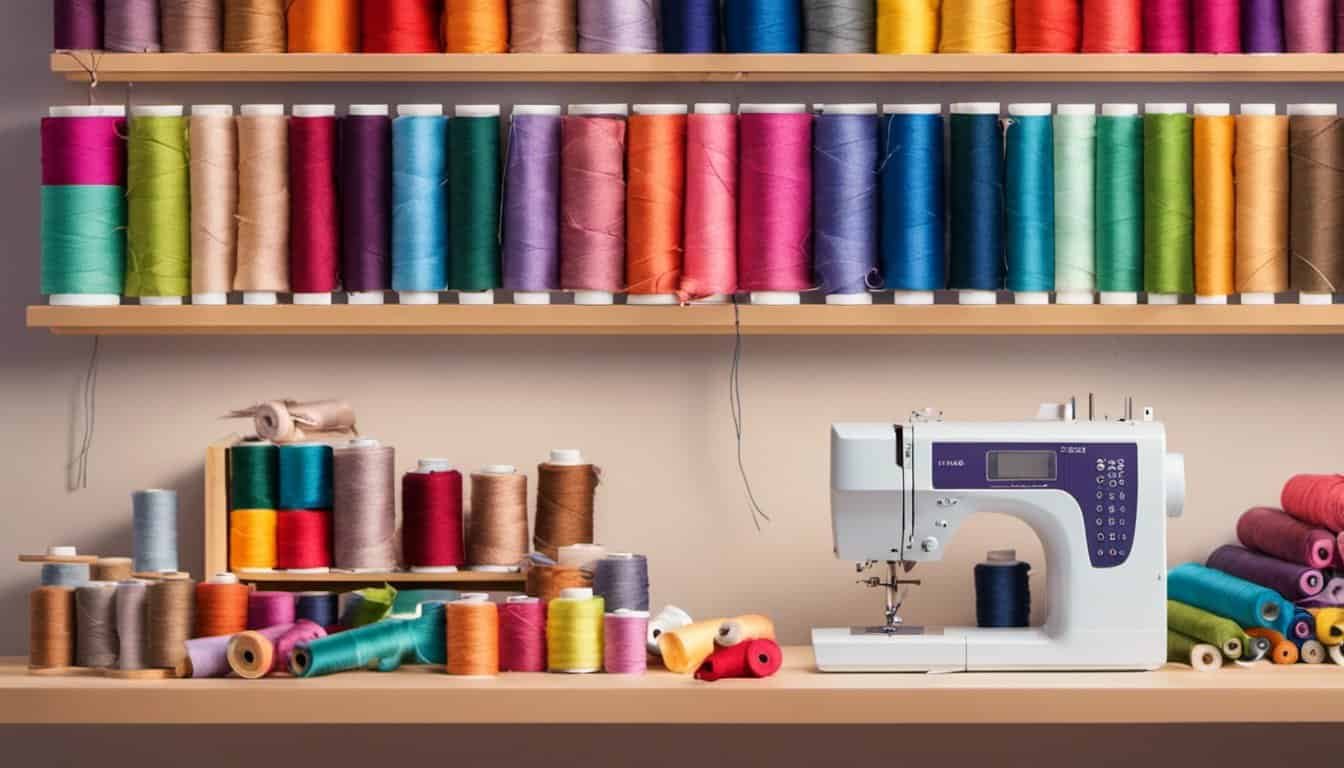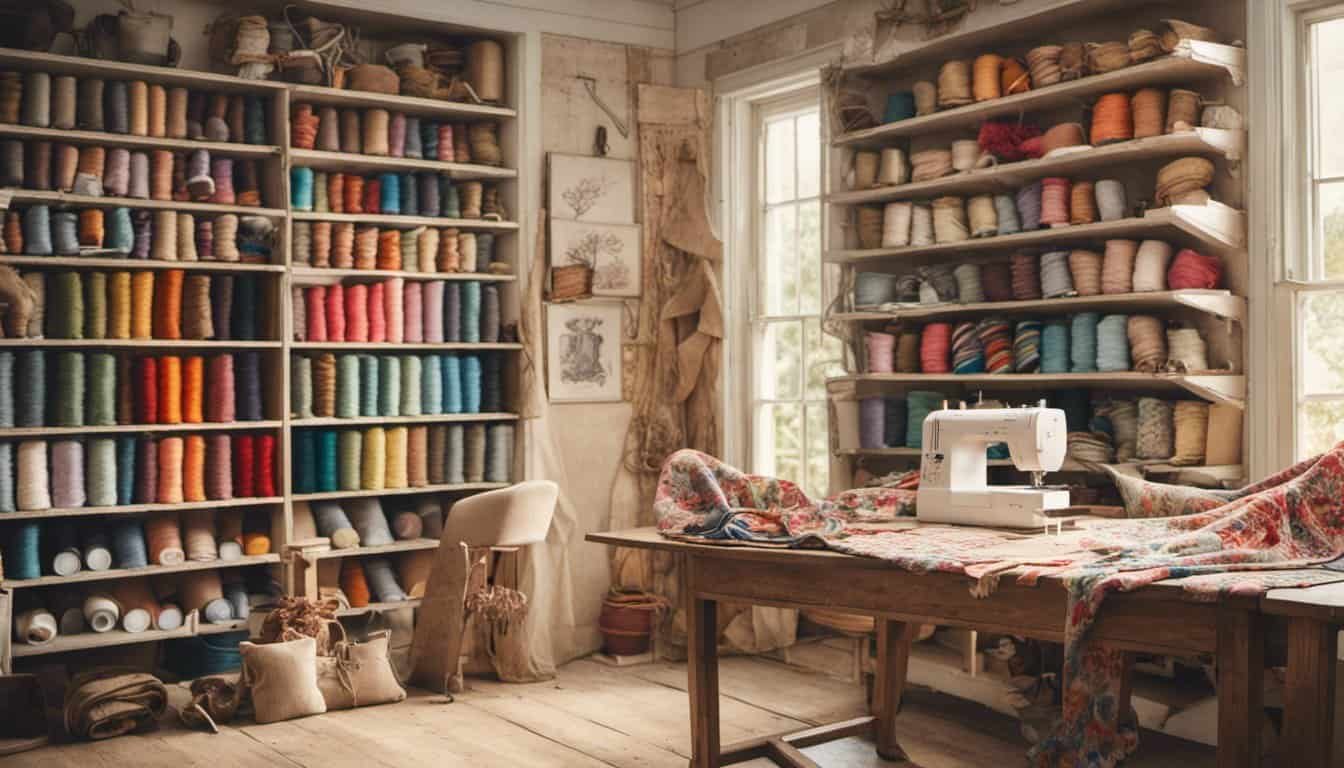There’s something magical about transforming everyday items into personalized pieces of art. Lampshades, for instance, might seem like a small detail, but they can completely change the vibe of a room. Making a fabric lampshade cover is one of those fun DIY projects that lets you add your own flair while giving an old or plain lampshade a fresh new look.
I love how a simple fabric choice can instantly reflect your personality or match your décor perfectly. Whether you’re going for bold patterns, soft neutrals, or something quirky, creating your own cover is easier than you might think. Plus, it’s a budget-friendly way to breathe new life into your space without buying a whole new lamp.
Understanding The Basics Of Making A Fabric Lampshade Cover
Making a fabric lampshade cover combines creativity and functionality, offering an easy way to customize your space. Before starting, gather the right tools and select a fabric that suits your design goals.
Essential Tools And Materials
I rely on specific tools and materials to simplify the process. Here’s what I use:
- Lampshade frame: Start with the existing frame or a new one matching the desired shape.
- Fabric: Use lightweight, flexible options like cotton or linen for easy handling.
- Fabric scissors: Create clean, precise cuts without fraying.
- Measuring tape: Measure the lampshade’s dimensions accurately for proper fitting.
- Fabric adhesive or glue gun: Attach the fabric securely to the frame.
- Binder clips: Hold the fabric in place while securing it.
- Bias tape: Finish the edges neatly for a professional look.
These materials ensure efficient crafting and a polished result.
Choosing The Right Fabric
Picking the right fabric impacts the look and functionality of the lampshade cover. I always consider these factors:
- Light transmission: Select light-colored fabrics or loosely woven materials to let light permeate. For muted lighting, opt for darker shades.
- Texture and pattern: Match the fabric’s pattern to the room’s theme. For example, florals suit vintage designs, while geometric prints complement modern rooms.
- Fabric durability: Switch to heat-resistant fabrics if using incandescent bulbs nearby.
- Ease of use: Avoid slippery materials like silk when working for the first time, as they’re harder to handle.
Balancing design with practicality creates a functional and stylish cover.
Preparing Your Lampshade
Before attaching fabric, the lampshade must be clean and accurately measured to ensure a perfect fit. Precision at this stage simplifies the rest of the process.
Cleaning And Measuring The Lampshade
I always start by wiping the lampshade frame with a soft cloth to remove dust or residue. For stubborn grime, I dampen the cloth lightly with water but avoid soaking any paper-backed shades, as moisture weakens the structure. Cleaning ensures the adhesive and fabric adhere smoothly.
Once it’s clean, I measure the circumference and height. To do this, I use a flexible measuring tape, recording both the top and bottom circumferences and the vertical height. If the lampshade tapers, I roll it along kraft paper, tracing the top and bottom edges to create a curved template. This method helps me cut fabric accurately for non-uniform shapes.
Cutting The Fabric To Size
Using measurements or a traced template, I fold my chosen fabric in half, aligning patterns if present, to cut a symmetrical piece. I leave an extra 1 inch on all sides for allowances. A well-sharpened pair of fabric scissors ensures clean cuts, reducing fraying edges.
If the fabric has a directional print, I carefully position it before cutting to ensure it’s straight and consistent. When working with lighter materials, I place weights along the edges to prevent shifting during the cutting process.
Assembling Your Fabric Lampshade Cover
Proper assembly ensures the finished lampshade cover is neat, secure, and functional. Working methodically during this step helps achieve professional-looking results.
Attaching The Fabric To The Frame
I wrap the fabric around the lampshade frame, aligning the edges carefully. Starting at the seam or back of the lampshade, I use fabric adhesive for a firm bond. Applying the glue in small sections prevents mess and keeps the fabric taut as I work. For added security while the adhesive sets, I use binder clips to hold the edges in place. On curved or tapered shades, I adjust the fabric slowly to avoid wrinkles or uneven tension.

If the frame has vertical support wires, I ensure the fabric hugs each wire closely. A gentle press along these areas helps the adhesive bond better, maintaining a smooth appearance. For directional prints or patterns, I double-check alignment to keep the design consistent across the shade.
Securing The Edges For A Polished Look
Once the fabric is attached, I trim any excess material, leaving about a half-inch allowance around the edges for finishing. I fold the fabric over the top and bottom frame wires, creating clean hems. Using fabric adhesive or a hot glue gun, I secure the folded edges neatly to the inside of the shade. For a polished look, I press gently with my fingers as the glue sets, ensuring no fabric puckering.
To hide raw edges, I apply bias tape along the inner seams where the fabric meets the frame. Bias tape not only conceals rough cuts but also adds a tailored finish. I choose a color or pattern that complements the fabric design, enhancing the overall aesthetic. For lampshades with visible inner edges, this detail makes a noticeable difference in craftsmanship.
Creative Tips And Tricks
Personalizing a fabric lampshade cover allows you to integrate elements of your craft skills while enhancing its functionality. Adding unique touches and maintaining the lampshade ensures its beauty and durability over time.
Adding Decorative Details
Incorporating decorative details transforms a basic fabric lampshade into a standout piece. Try adding trims like lace, pom-poms, or beaded fringe along the bottom edge. Stitch these carefully to avoid fraying and ensure even placement.
« How to Make a Fabric Headboard for Your Bed: Easy DIY Guide to Transform Your Bedroom
How to Sew Curtains for Any Window Size: A Step-by-Step Guide to Perfectly Fitted Drapes »
If you’re skilled in embroidery, embellish the fabric cover with floral motifs, geometric patterns, or monograms before attaching it to the frame. Use embroidery floss in colors that complement your room’s décor.
Appliqué designs, such as cutouts of contrasting fabric in shapes like stars or leaves, add dimension. Secure them with fabric glue or sew them for a more durable result.
For additional flair, attach fabric bows or buttons at the frame intersections. Choose lightweight materials for embellishments to avoid altering the lampshade’s balance or structure.
Maintaining Your Lampshade Cover
Proper care keeps your finished lampshade looking fresh. Dust it weekly using a lint roller, soft brush, or clean microfiber cloth. For stubborn dust or dirt, gently vacuum it with a low-powered hand attachment.
If the fabric is washable, unclip and hand wash it with mild detergent. Let it air dry completely before reassembling. Avoid machine washing or drying, as this risks damaging delicate trims and embellishments.

Rotate the lampshade periodically to prevent uneven fading from sunlight. Using a low-heat bulb reduces discoloration or fabric deterioration over time. Replace adhesive trims as they loosen, ensuring the design stays intact.
Common Mistakes To Avoid
Avoiding common pitfalls ensures a professional-looking fabric lampshade cover. Here are mistakes crafters often make and how to prevent them:
- Choosing the wrong fabric
Using a thick or rigid fabric limits light transmission. Lightweight cotton, linen, or polyester blends work best. Avoid stretchy or slippery materials that are harder to attach and manage.
- Skipping measurements
Improper measurements lead to gaps or excess fabric. Always measure the lampshade’s height, perimeter, and angles. For tapered shades, trace and test a curved template beforehand.
- Overusing adhesive
Applying excess fabric adhesive causes messy residue and uneven texture. Use a thin, even layer for clean attachment. Excess can seep through thinner fabrics, staining the surface.

- Ignoring fabric grain
Not aligning the fabric’s grain or pattern results in skewed or uneven designs. Position directional prints carefully and test the layout before cutting.
- Neglecting edge finishing
Leaving raw or frayed edges reduces durability and aesthetic appeal. Trim excess material and apply bias tape or neatly folded hems to maintain a polished appearance.
- Rushing the assembly
Hurrying leads to wrinkles and uneven lines. Work slowly when attaching fabric to the frame, checking alignment and securing each section with binder clips before the adhesive dries.
- Disregarding heat and light factors
Using heat-sensitive materials or high-wattage bulbs risks discoloration or fire hazards. Pair your lampshade with low-heat LED bulbs and avoid materials prone to fading or scorching.
- Skipping maintenance
Neglecting regular care reduces longevity. Dust the shade weekly with a soft cloth or vacuum attachment and rotate it every few months to minimize UV fading.

Steering clear of these mistakes helps create a durable and visually appealing lampshade cover that complements your décor perfectly.
Conclusion
Creating a fabric lampshade cover is such a rewarding way to add a personal touch to your space. It’s a simple yet impactful project that lets you combine creativity with functionality while staying budget-friendly.
Whether you’re refreshing an old lampshade or crafting something entirely unique, the process is as enjoyable as the finished product. With a little patience and attention to detail, you’ll have a custom piece that brightens your room in more ways than one.
So grab your favorite fabric, let your imagination run wild, and enjoy bringing your vision to life!


















